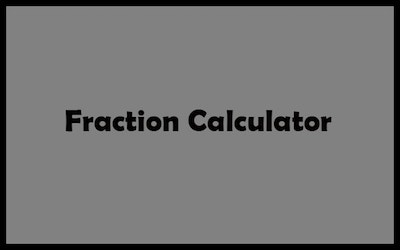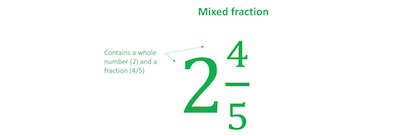a / b + c / d | a b / c + d e / f | |||
| Answer: | ||
| Result= | ||
The truth is that fractions don’t tend to be seen as easy by most students. While most understand they can be helpful, the reality is that there is something that doesn’t seem to sound right. And this makes fractions very complicated.
One of the things that you need to understand is that there are two main types of fractions:
- Regular Fractions: These are the fractions that include only a numerator and a denominator. Some examples include 4/5, 32/5, 9/8, among so many others.
- Mixed Fractions: These are also known as mixed numbers and while they are very similar to regular fractions, they do have a different appearance, and therefore, a different method when you need to do math operations with them. Some examples include 4 (7/4), 2 (1/3), 2 (1/9), among so many others.
Discover how to add fractions.
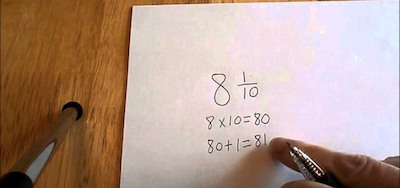
Now that you understand that there are two different types of fractions, today we decided to take a look at the most complicated ones – the nixed fractions. So, to ensure that you don’t have any more problems when you need to do math operations with them, we decided not only to add a fraction mixed number calculator to this page which you can see at the top, as we are also going to explain to you exactly how you can make all the mixed fractions math operations without using our fraction mixed number calculator. So, let’s get started.
Using Our Fraction Mixed Number Calculator
If you take a look at the top of this page, you will see our simple to use calculator. Hopefully, you will be able to use it not only when you just want to do a quick math operation involving mixed fractions as well as to confirm your results.
As we just said, our fractions whole number calculator is very easy to use and you shouldn’t have any problems with it. Nevertheless, when you are looking to do a math operation with mixed fractions, you want to ensure that you select the right type of fraction. In this case, you will need to select the second type.
As you can see, our fractions whole number calculator immediately shos you all the blank fields that you need to fill out with your own mixed fractions. As soon as you fill all the blanks, you can then click on the Calculate button to retrieve your result. One of the things that you will notice when you are using our calculator is that you will get your results in the form of a fraction as well as in the form of a decimal.
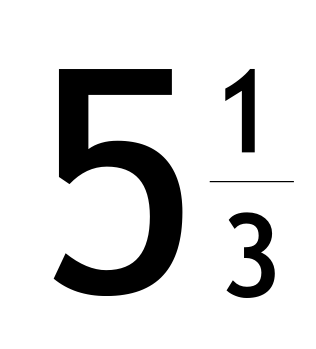
Another thing that is worth to notice within our fractions whole number calculator is that you can add, subtract, multiply, and divide mixed fractions with it without any problems. All you need to do is to click on the arrow that is standing between both fractions and choose the math operation that you want to perform.
So, now that we already described to you how our calculator works, it’s time to check some practical examples. To ensure that you completely understand the process, we are going to show you examples for each one of the different math operations – add, subtraction, multiplication, and division.
Learn how to subtract regular fractions.
Adding Using Our Fraction Mixed Number Calculator – Practical Examples
As we mentioned above, with our fractions whole number calculator, you can easily add mixed fractions.
Practical Example #1: Let’s say that you are looking to add: 5 (7/8) + 3 (2/5)
So, as we mentioned, the first thing that you need to do is to make sure that you have the mixed fractions selected and not the regular fractions. Then, you just need to fill out the calculator with the mixed fractions that you want to add. Make sure that you have the addition selected and as soon as you do this, you just need to click on the Calculate button to get your result.
So, in this case, you will need to add the fractions: 5 (7/8) and 3 (2/5). And you will get the following result:
5 (7/8) + 3 (2/5) = 9 (11/40) = 9.28
Don’t know how to multiply regular fractions?
Practical Example #2: Let’s now say that you are looking to add: 2 (7/4) + 1 (2/9)
So, as we mentioned, the first thing that you need to do is to make sure that you have the mixed fractions selected and not the regular fractions. Then, you just need to fill out the calculator with the mixed fractions that you want to add. Make sure that you have the addition selected and as soon as you do this, you just need to click on the Calculate button to get your result.
So, in this case, you will need to add the fractions: 2 (7/4) and 1 (2/9). And you will get the following result:
2 (7/4) + 1 (2/9) = 4 (35/36) = 4.97
Discover how to divide regular fractions.
Subtracting Using Our Fraction Mixed Number Calculator – Practical Examples
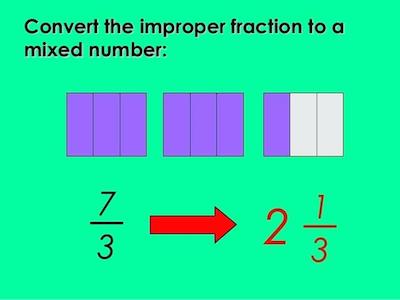
As we mentioned above, with our fractions whole number calculator, you can easily subtract mixed fractions.
Practical Example #1: Let’s say that you are looking to subtract: 4 (1/8) – 1 (1/5)
So, as we mentioned, the first thing that you need to do is to make sure that you have the mixed fractions selected and not the regular fractions. Then, you just need to fill out the calculator with the mixed fractions that you want to subtract. Make sure that you have the subtraction selected and as soon as you do this, you just need to click on the Calculate button to get your result.
So, in this case, you will need to subtract the fractions: 4 (1/8) and 1 (1/5). And you will get the following result:
4 (1/8) – 1 (1/5) = 2 (37/40) = 2.92
Practical Example #2: Let’s now say that you are looking to subtract: 2 (8/3) – 1 (5/6)
So, as we mentioned, the first thing that you need to do is to make sure that you have the mixed fractions selected and not the regular fractions. Then, you just need to fill out the calculator with the mixed fractions that you want to subtract. Make sure that you have the subtraction selected and as soon as you do this, you just need to click on the Calculate button to get your result.
So, in this case, you will need to subtract the fractions: 2 (8/3) and 1 (5/6). And you will get the following result:
2 (8/3) – 1 (5/6) = 2 (5/6) = 2.83
Discover how to pass from fraction to decimal.
Multiplying Using Our Fraction Mixed Number Calculator – Practical Examples

As we mentioned above, with our fractions whole number calculator, you can easily multiply mixed fractions.
Practical Example #1: Let’s say that you are looking to multiply: 3 (5/8) X 1 (2/5)
So, as we mentioned, the first thing that you need to do is to make sure that you have the mixed fractions selected and not the regular fractions. Then, you just need to fill out the calculator with the mixed fractions that you want to multiply. Make sure that you have the multiplication selected and as soon as you do this, you just need to click on the Calculate button to get your result.
So, in this case, you will need to multiply the fractions: 3 (5/8) and 1 (2/5). And you will get the following result:
3 (5/8) X 1 (2/5) = 5 (3/40) = 5.08
Discover how to pass from percent to fraction.
Practical Example #2: Let’s say that you are looking to multiply: 2 (4/3) X 3 (1/2)
So, as we mentioned, the first thing that you need to do is to make sure that you have the mixed fractions selected and not the regular fractions. Then, you just need to fill out the calculator with the mixed fractions that you want to multiply. Make sure that you have the multiplication selected and as soon as you do this, you just need to click on the Calculate button to get your result.
So, in this case, you will need to multiply the fractions: 2 (4/3) and 3 (1/2). And you will get the following result:
2 (4/3) X 3 (1/2) = 11 (2/3) = 11.67
Dividing Using Our Fraction Mixed Number Calculator – Practical Examples

As we mentioned above, with our fractions whole number calculator, you can easily divide mixed fractions.
Practical Example #1: Let’s say that you are looking to divide: 1 (3/5) ÷ 1 (4/7)
So, as we mentioned, the first thing that you need to do is to make sure that you have the mixed fractions selected and not the regular fractions. Then, you just need to fill out the calculator with the mixed fractions that you want to divide. Make sure that you have the division selected and as soon as you do this, you just need to click on the Calculate button to get your result.
So, in this case, you will need to divide the fractions: 1 (3/5) and 1 (4/7). And you will get the following result:
1 (3/5) ÷ 1 (4/7) = 1 (1/55) = 1.02
See how easy it is to pass a decimal to fraction.
Practical Example #2: Let’s now say that you are looking to divide: 4 (1/3) ÷ 2 (9/5)
So, as we mentioned, the first thing that you need to do is to make sure that you have the mixed fractions selected and not the regular fractions. Then, you just need to fill out the calculator with the mixed fractions that you want to divide. Make sure that you have the division selected and as soon as you do this, you just need to click on the Calculate button to get your result.
So, in this case, you will need to divide the fractions: 4 (1/3) and 2 (9/5). And you will get the following result:
4 (1/3) ÷ 2 (9/5) = 1 (8/57) = 1.14
As you can see, using our calculator is pretty easy. However, we believe that it is also important that you know how to do these calculations by hand.
Adding Mixed Fractions By Hand
Let’s say that you want to know the result of: 1 (3/4) + 2 (3/8)
So, how can you do these calculations by hand?
The first thing that you need to do is to rewrite the equation:
1 (3/4) + 2 (3/8) = 1 + 3/4 + 2 + 3/8
Here, you can easily see that you have two whole numbers and two regular fractions. Therefore, you can add them separately:
1 + 2 = 3 and
3/4 + 3/8
Since these regular fractions don’t have the same denominator, you will need to find the lowest common denominator. In this case, it’s 8. So, you will need to multiply the first equation by 2 and the second one by 1:
3/4 + 3/8 = [(3 X 2) / (4 X 2)] + [(3 X 1) / (8 X 1)] =
= 6/8 + 3/8
= (6+3)/8
= 9/8
By simplifying 9/8, you get:
9/8 = 1 (1/8)
Now, you need to combine the whole and fraction parts:
3 + 1 + 1/8 = 4 (1/8)
Learn the difference between proper and improper fractions.
Bottom Line
As you can see, it’s not that difficult to make math operations when you are dealing either with regular fractions or with mixed fractions. The secret is to understand the process and to practice as much as you can.
Notice that while we just showed you an example for adding mixed fractions by hand and we didn’t cover the subtraction, multiplication or division, we believe that you should have any problems with those.
